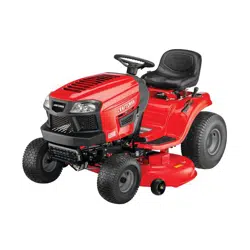
CRAFTSMAN® is a registered trademark of Stanley Black & Decker, Inc., used under license.
CRAFTSMAN® es una marca registrada de Stanley Black & Decker, Inc., utilizada bajo licencia.
© 2018 CRAFTSMAN U.S. & Canada Only
CRAFTSMAN.com
Form No. 769-16711A
(November 27, 2018)
INSTRUCTION MANUAL | MANUAL DE INSTRUCTIONES
T100 SERIES
LAWN TRACTOR/TRACTORES CORTACÉSPED
Model Nos. CMXGRAM1130036
CMXGRAM1130037
CMXGRAM1130038
CMXGRAM1130039
CMXGRAM1130041
CMXGRAM1130042
CMXGRAM7821242
CMXGRAM7831829
IF YOU HAVE QUESTIONS OR COMMENTS, CONTACT US.
SI TIENE DUDAS O COMENTARIOS, CONTÁCTENOS.
1-888-331-4569 WWW.CRAFTSMAN.COM
Loading ...
Loading ...
Loading ...
